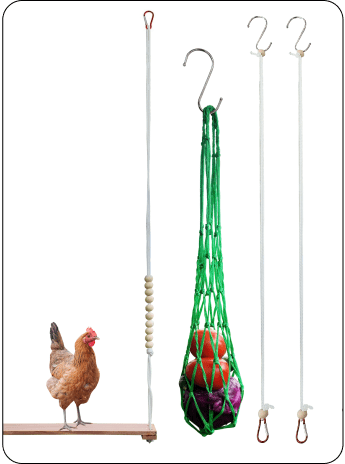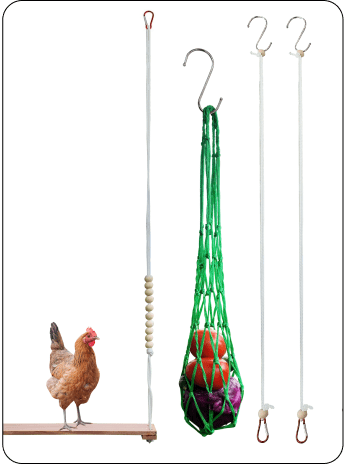Introduction
Ever feel like a stranger in the world of Amazon, even after spending months—or years—on the platform? Well, you’re not alone. Selling on Amazon can often feel like working through a never-ending maze, leaving you with a sea of doubts and unanswered questions. But don’t worry! This blog covers some of the most common questions sellers face, offering practical solutions to help you overcome challenges and maximize your success on the platform.
How can I start selling on global marketplaces or regions?
Amazon offers a huge global platform, allowing sellers to expand their reach to a broader audience beyond borders. However, it’s crucial to research and choose the right marketplace to maximize your business’s potential. Key factors to consider during this research include market size, competition, cultural relevance, consumer purchasing power, and demand. Each marketplace also presents distinct pricing and advertising strategies that sellers must adapt to for successful expansion.
Things to consider:
Brand registry: Begin by registering for a seller account in your selected marketplaces. This process involves submitting essential details, including your business information, tax documentation, and bank account details. Enrolling in Brand Registry helps protect your registered trademarks on Amazon and ensures customers have an accurate and trustworthy experience with your brand.
Choose a fulfillment method: Amazon provides two fulfillment options for managing inventory and shipping: Fulfillment by Amazon (FBA) and Fulfillment by Merchant (FBM). For international marketplaces, FBA is often the preferred choice due to its benefits, such as streamlined logistics, increased visibility, improved customer experience, and hassle-free operations for Amazon FBA sellers.
If you opt for FBM, you’ll be responsible for storing, packaging, and shipping products to international customers. This approach requires meticulous planning to handle international shipping logistics, including customs clearance and delivery arrangements.
Set up currency exchange: Decide how you’ll manage currency exchange rates for your international transactions. Consider using a reliable currency exchange service or partnering with a financial institution to reduce exchange fees and optimize conversions.
Important considerations: Ensure full compliance with local laws and regulations in your target marketplaces. This includes understanding and adhering to consumer protection laws, product safety standards, and data privacy regulations to avoid legal issues and build trust with customers.
Language support considerations: Expanding into global marketplaces demands a multi-faceted approach to branding. While high-resolution images, robust keyword research, and compelling product descriptions remain crucial across all regions, successful localization necessitates careful adaptation. This includes translating product titles, descriptions, and bullet points into the native language of each target market. Moreover, keyword research must be conducted in each local market, utilizing relevant keywords and employing translation tools to identify appropriate terms. This attention to detail ensures your brand message relates effectively with the unique cultural nuances and linguistic preferences of each target audience.
How to optimize product variations?
Adding multiple new variations or expanding an existing listing with additional variations can significantly enhance your overall Amazon SEO and deliver valuable benefits. Variations provide shoppers with multiple options—such as different sizes, colors, prints or flavors—all in one place, eliminating the need to browse through numerous listings. This convenience can lead to higher conversion rates. Additionally, newly added products gain greater visibility when linked to their parent listing, further boosting their exposure.
Optimizing variations effectively
Foundational steps: When listing variation products, it’s important to consider eligibility requirements. Ensure that your product category supports variations and review Amazon’s category-specific guidelines for allowed variation themes (e.g. size, color, material). Establish a clear relationship between the parent product (the main product) and its child variations. The parent listing should focus on showcasing the core features of the product, while child listings emphasize the unique attributes of each variation.
Variation attributes: To optimize product variations, ensure accurate and consistent attribute values. Adhere to standardized size charts and use universally recognized terms. Employ clear and concise language that is easily understood by all customers, avoiding jargon or overly technical terms. Maintaining consistent formatting across all variations is crucial for enhancing readability and improving the overall user experience.
Images: Use high-resolution images that clearly and accurately showcase each product variation. Ensure the images highlight the unique features of each option, providing customers with a detailed view. Additionally, maintain consistent backgrounds across all images to create a professional and visually cohesive presentation across your listings.
Product description: Product descriptions offer an excellent opportunity to emphasize the unique features and attributes of each variation. Use bullet points to effectively summarize the key features and benefits of each option. Additionally, address any potential customer concerns related to specific variations, such as fit, compatibility, or other important details, to build trust and enhance the buying experience.
Why did we lose the Buy Box despite having positive reviews and no competition, and how can we regain it?
Losing the Buy Box can be frustrating, especially when you have positive reviews and no direct competition. While you might assume having no competition guarantees the Buy Box, Amazon’s algorithm considers various factors beyond direct competition.
- Fulfillment Performance: Fulfillment metrics are crucial in determining Buy Box eligibility. Even minor fluctuations in your Order Defect Rate (ODR), late shipments, or order cancellations can negatively affect your standing. Additionally, maintaining adequate inventory is critical. Frequent stockouts, even for short durations, signal unreliability to Amazon and may reduce your chances of winning the Buy Box.
- Account Health: A healthy account plays a significant role in maintaining Buy Box eligibility. Negative reviews, A-to-Z Guarantee claims, or other indicators of customer dissatisfaction—even if resolved—can raise concerns about your fulfillment reliability and impact your eligibility.
- Losing the Buy Box can be frustrating, especially when you have positive reviews and no direct competition. While you might assume having no competition guarantees the Buy Box, Amazon’s algorithm considers various factors beyond direct competition.
- Price Stability: Frequent or significant price fluctuations can harm your Buy Box eligibility. Drastic price changes may indicate pricing instability, suggesting to Amazon that you are struggling to establish a competitive and consistent price point.
Steps to Regain the Buy Box:
- Review Performance Metrics: Thoroughly analyze your Seller Performance Dashboard for any red flags, such as order defects, late shipments, or negative feedback. Address these issues promptly to improve your metrics.
- Maintain Inventory Levels: Ensure sufficient inventory to fulfill orders reliably and avoid stockouts.
- Optimize Pricing Strategy: Avoid excessive price fluctuations. Instead, maintain competitive, stable pricing while factoring in shipping costs and market trends.
Reach Out to Amazon Seller Support: If you’ve addressed all potential issues but still haven’t regained the Buy Box, contact Amazon Seller Support. Provide a detailed explanation of the steps you’ve taken to improve your performance and request further guidance.
How to protect brand-registered products from being mapped by other sellers?
If other sellers are mapping your brand-registered products despite your complaints, use the Brand Registry tools, such as the “Report a Violation” feature, to report these incidents. When submitting a violation report, provide clear, compelling evidence to support your claim, including proof of brand ownership, invoices, and product images.
If your initial reports are not addressed, escalate the issue to Amazon Seller Support or use the appropriate channels within Amazon seller central account for further action. Ensure your product listings are accurate, complete, and comply with Amazon’s guidelines. Regularly monitor your listings to identify any unauthorized changes or mapping attempts.
By taking these proactive steps, you can better safeguard your brand-registered products from unauthorized mapping and maintain full control over your listings on Amazon. To enhance your Amazon account health rating, consider partnering with good Amazon account management companies.
How to prevent account suspensions?
Preventing account suspensions on Amazon is crucial for the long-term success of your selling business. By proactively addressing potential issues and maintaining a high level of compliance, you can minimize the risk of account disruption and ensure the smooth operation of your Amazon business.
- Regularly review Amazon’s Seller Policies and Guidelines. Familiarize yourself with all relevant policies, including those related to product listing, order fulfillment, customer service, and account health.
- Subscribe to Amazon’s official communications to stay informed about any policy changes or updates.Ensure all your business practices are in strict compliance with Amazon’s policies. This includes product authenticity, accurate product descriptions, and adherence to shipping deadlines.
- Monitor your key performance indicators (KPIs) on the Seller Performance Dashboard, including ODR, late shipment rate, and pre-fulfillment cancel rate.
- Proactively identify and address any potential issues that could negatively impact your account health.
- Ensure your product listings are accurate, complete, and free from any misleading information. Use relevant keywords to improve product visibility, but avoid using black hat SEO techniques.
- If you are a brand owner, utilize Brand Registry to protect your brand and prevent unauthorized sales.
Will I loose buy box if I decrease the price?
Price plays a key role in determining Buy Box eligibility. Offering low prices can significantly increase your chances of winning the Buy Box, rather than risking its loss. However, it’s important to note that Amazon’s Buy Box algorithm evaluates more than just pricing. Other key factors include your order defect rate, late shipment rate, customer service performance, and fulfillment speed. Ensuring excellence in these areas can further enhance your chances of securing the coveted Buy Box.
How do I handle slow-moving and obsolete inventory?
Efficient inventory management is vital for Amazon sellers. Addressing slow-moving or obsolete inventory is key to minimizing financial losses and maintaining healthy cash flow. Start by establishing clear criteria to define “slow-moving” inventory, such as low sales velocity over a specific time frame or a high inventory turnover rate. Use Amazon Seller Central reports to identify these items and analyze contributing factors like seasonality, competition, pricing, and product quality.
To move slow-selling inventory, consider strategies such as offering significant discounts, running flash sales, or bundling them with high-demand products. Where feasible, explore options like repurposing or refurbishing items. Alternatives include donating inventory to charity or working with third-party liquidators.
To avoid similar issues in the future, enhance demand forecasting to reduce overstocking risks. Invest in inventory management tools to monitor stock levels, set reorder points, and track sales trends. Perform regular inventory audits to identify and address slow-moving items before they become a problem.
How to identify and target the right customer audience?
Understanding your target audience is paramount for Amazon success. Begin by pinpointing your product’s niche and analyzing competitor offerings. Scrutinize customer reviews to understand the specific needs and problems your product addresses for your target audience. What are their challenges, frustrations, and desires?
Amazon offers tools like “Audience Insights” within Amazon Seller Central that helps you gain valuable data about your existing customers. This can reveal insights into their demographics, interests, and shopping behavior. You can also use campaign data from Amazon advertising campaigns to identify the most effective targeting options and understand which customer segments are most responsive to your ads.
Extend your research beyond the Amazon ecosystem. Actively monitor social media conversations and online forums dedicated to your product category. These valuable resources provide invaluable insights into customer interests, pain points, and the specific language they use to describe their needs. By understanding their vernacular, you can tailor your product descriptions and marketing messages to resonate more effectively with your target audience.
Whether you’re a seasoned pro or just starting out, if you’re still feeling uncertain about your Amazon business, eSeller is here to help. We are the Amazon advertising specialists whom you can reach out to for expert guidance and support to boost your sales and simplify managing your brand on Amazon.










